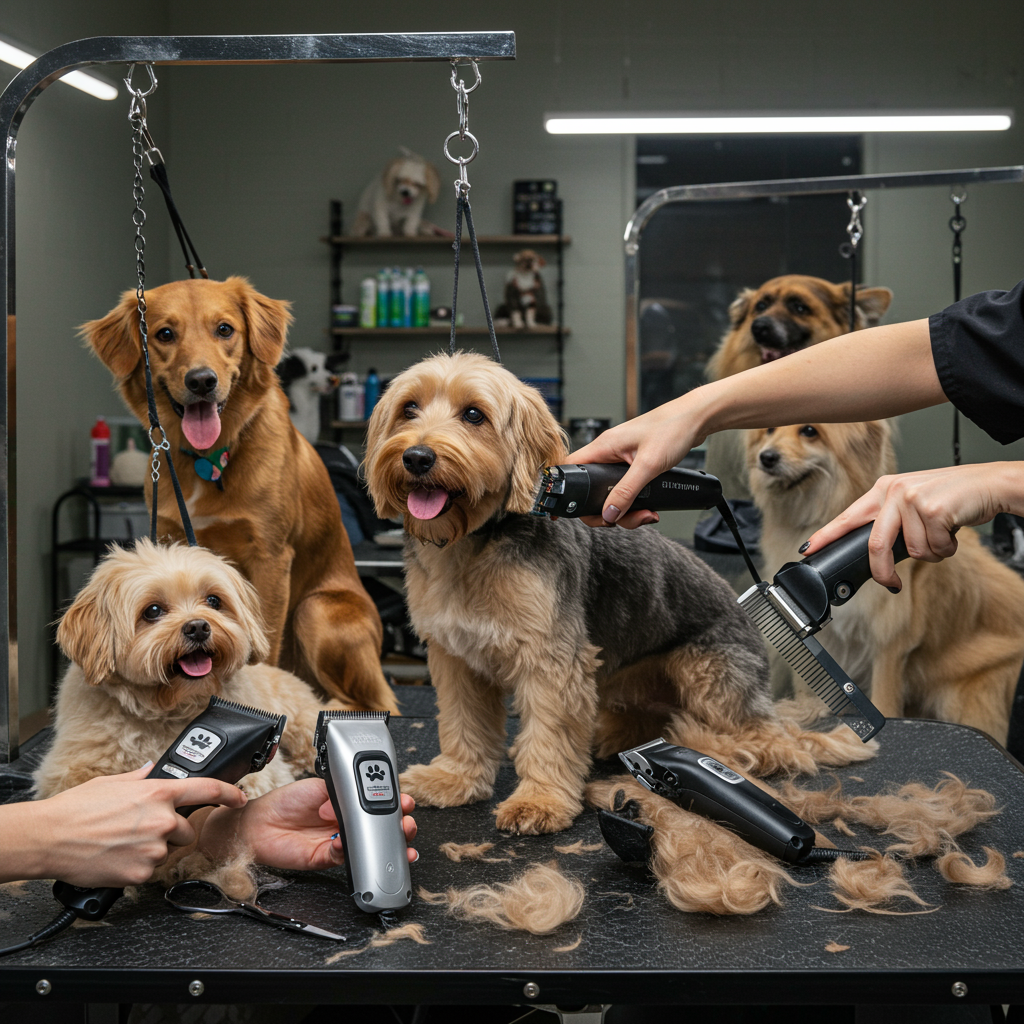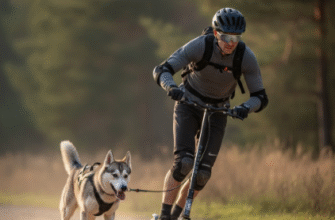Keeping your furry friend looking sharp isn’t just about aesthetics; it’s crucial for their comfort and health. Regular grooming prevents matting, removes loose hair, and allows you to check for skin issues. But tackling that fur coat requires the right tool for the job. Using the wrong clippers can lead to uneven cuts, painful pulling, or even skin irritation for your dog. Not all dog coats are created equal, and neither are clippers. Choosing the best clippers involves understanding your dog’s specific coat type and matching it with the appropriate clipper features.
Finding the perfect pair of dog grooming clippers can feel overwhelming with so many options available. From motor power and blade types to corded versus cordless models, the choices seem endless. This guide will help you navigate the fuzzy world of dog clippers, breaking down the best options for various coat types, ensuring you can groom your canine companion effectively and safely at home.
Understanding Clipper Basics: Motor, Blades, and Speeds
Before diving into coat types, let’s get a grip on the core components of dog clippers:
Motor Type: This is the engine of your clippers and significantly impacts performance, noise, and vibration.
- Magnetic Motors: Often found in lighter-duty, less expensive clippers. Best for quick trims on fine coats but can struggle with thick or matted fur. They tend to be simpler with fewer moving parts.
- Pivot Motors: Offer more power than magnetic motors but less than rotary. They cut well through thicker hair but operate at a lower blade speed. Good for general use.
- Rotary Motors: The powerhouse choice, found in professional-grade clippers. They offer the best combination of power and blade speed, making them suitable for all coat types, including thick, matted, or double coats. They often come with variable speed settings.
Blades: Clipper blades come in various sizes (indicated by numbers like #10, #7F, #4F, #30). Lower numbers leave hair longer, while higher numbers cut closer to the skin. ‘F’ or ‘FC’ indicates a ‘finish cut’ blade, which leaves a smoother finish than skip-tooth blades (often used for rough cuts or getting under mats). Material matters too; ceramic blades stay cooler longer than steel, but steel blades can be sharpened multiple times.
Speeds: Single-speed clippers are straightforward but less versatile. Multi-speed clippers (usually 2 or 5 speeds) offer more control. Lower speeds generate less heat and are better for sensitive areas or fine coats, while higher speeds tackle thick fur more efficiently but generate more heat and noise.
Corded vs. Cordless: Corded clippers offer consistent power but limit maneuverability. Cordless clippers provide freedom of movement, ideal for fidgety dogs or hard-to-reach spots, but rely on battery life and might offer slightly less power than their top-tier corded counterparts.
Clippers for Fine or Thin Coats
Dogs like Greyhounds, Whippets, Boxers, and some Terriers have fine or thin coats that are generally easier to manage. You don’t typically need a super-powered motor for these coats unless dealing with specific dense areas.
What to Look For:
- Motor: Magnetic or Pivot motors often suffice. A lower-speed rotary motor is also a good option.
- Blades: A standard #10 blade is versatile for general clipping. Finer blades (#15 or #30) can be used for closer work on areas like paw pads or sanitary trims, but use caution on thin skin.
- Speed: Single speed or the lower setting on a multi-speed clipper is usually adequate. High speeds can be too aggressive and may cause irritation.
- Features: Lightweight, ergonomic design is helpful for comfortable handling. Noise level might be a factor for sensitive dogs.
Clippers designed for light-duty use or touch-ups often work well here. They tend to be quieter and vibrate less, which is a bonus for noise-sensitive breeds. Ensure the blades are sharp to prevent pulling the fine hairs.
Clippers for Thick or Double Coats
Breeds like Huskies, German Shepherds, Golden Retrievers, Pomeranians, and Newfoundlands boast thick or double coats. These require serious power to cut through effectively without bogging down.
What to Look For:
- Motor: A powerful Rotary motor is essential. Look for professional-grade clippers designed for heavy-duty use.
- Blades: Use skip-tooth blades for initial bulk removal or tackling mats (with extreme caution), followed by finish-cut blades (like #7F or #5F) for a smooth look. Ensure blades stay cool; consider ceramic blades or have coolant spray and spare blades handy.
- Speed: Multi-speed clippers are highly recommended. Use higher speeds for thick sections but lower speeds for sensitive areas and to manage heat buildup.
- Features: Durability is key. Look for clippers with good ventilation to help dissipate heat. Both corded (for uninterrupted power) and high-power cordless models can work, depending on preference.
Clipping double-coated breeds requires care, as shaving them too close can damage the coat’s insulating properties. Often, a good deshedding and trimming routine is preferred over a full clip-down. If clipping is necessary, a powerful rotary motor clipper is non-negotiable.
Important Safety Note: Clipper blades get hot! Regularly touch the blade (carefully) to check its temperature against your own skin. If it feels too hot for you, it’s definitely too hot for your dog. Turn off the clippers, switch to a cool blade, or use a blade coolant spray.
Clippers for Wiry Coats
Terriers (like Schnauzers, Scottish Terriers, Airedales) often have wiry topcoats with softer undercoats. These coats are prone to matting if not regularly groomed and require clippers that can handle the tough, coarse texture.
What to Look For:
- Motor: A strong Pivot or, ideally, a Rotary motor is needed to cut cleanly through coarse hair.
- Blades: Sharp, durable steel blades work well. A #10 blade is standard for body work, while longer blades (#7F, #5F, #4F) can be used depending on the desired length. Maintain blade sharpness diligently.
- Speed: Multi-speed offers flexibility. Higher speeds might be needed for dense areas, but monitor heat.
- Features: A clipper that feels balanced in hand helps with control. Good quality guide combs can help achieve uniform length if leaving the coat longer.
While hand-stripping is the traditional grooming method for maintaining the correct texture in many wiry coats, clipping is a common alternative for pet dogs. Choose powerful clippers to avoid chewing or pulling the hair, which can be uncomfortable and result in an uneven finish.
Clippers for Curly or Wavy Coats
Poodles, Bichon Frises, Portuguese Water Dogs, and similar breeds have coats that range from soft waves to tight curls. These coats are dense and highly prone to matting, requiring regular and thorough grooming.
What to Look For:
- Motor: A high-powered Rotary motor is the best choice. These coats are deceptively thick and will quickly overwhelm lesser motors.
- Blades: Finish Cut (F/FC) blades are essential for a smooth finish on curly coats. Sizes depend on the desired style (#10, #7F, #5F, #4F are common). Keep blades exceptionally sharp and clean.
- Speed: Variable speeds are crucial. Use higher speeds for efficient cutting through dense curls but lower speeds for detail work and sensitive zones.
- Features: Look for clippers known for running cool, as clipping dense, curly coats generates significant heat. Ergonomics are important for potentially longer grooming sessions.
Thorough brushing and combing *before* clipping are vital for curly coats to remove any existing mats. Attempting to clip through mats is painful for the dog and hard on your equipment. Professional-grade clippers are a worthwhile investment for these coat types.
Clippers for Long, Silky Coats
Yorkshire Terriers, Shih Tzus, Maltese, and Afghan Hounds have long, flowing coats that can be fine or thick but often require precision cutting to maintain their appearance and prevent tangles.
What to Look For:
- Motor: A reliable Pivot or Rotary motor works well. While not always as dense as a double coat, the length requires consistent power for a clean cut.
- Blades: Finish Cut blades are preferred for a smooth, non-choppy look. Blade choice depends heavily on the desired length and style. Guide combs are very useful for maintaining longer lengths evenly.
- Speed: Single or multi-speed clippers can work. Lower speeds often provide better control for precision styling and reduce the risk of catching skin on dogs with less dense undercoats.
- Features: Lightweight clippers reduce fatigue during potentially detailed grooming. Quiet operation is a plus for smaller or more anxious breeds.
Again, pre-grooming brushing is essential. For silky coats prone to static, ensure the coat is clean and well-conditioned before clipping for the best results. Sharp blades are critical to avoid pulling fine hairs.
General Clipper Maintenance and Usage Tips
Regardless of the clipper or coat type, proper maintenance extends the life of your tool and ensures safe operation:
Clean After Every Use: Brush away hair from the blades and vents.
Oil Blades Regularly: Apply clipper oil before, during (if grooming for extended periods), and after each use to reduce friction and heat.
Use Blade Wash/Disinfectant: Regularly clean blades thoroughly with a proper blade wash solution to remove buildup and disinfect.
Check Blade Alignment and Tension: Ensure blades are correctly aligned and tensioned according to the manufacturer’s instructions.
Sharpen or Replace Blades: Dull blades pull hair and cut poorly. Have steel blades professionally sharpened or replace ceramic blades when they become dull.
Verified Tip: Proper preparation makes clipping easier and safer. Always bathe and thoroughly dry your dog before clipping. Clipping a dirty coat dulls blades quickly and can introduce bacteria into any small nicks. Ensure the coat is completely tangle-free before starting.
Making the Right Choice
Investing in the right dog grooming clippers pays off in the long run with better results, less stress for your dog, and potentially fewer professional grooming bills. Consider your dog’s primary coat type, but also factor in any specific issues like matting tendencies or sensitive skin. Prioritize motor power for thick or curly coats, and focus on precision and lower heat for finer or thinner coats. Reading reviews and considering clippers known for durability and running cool can also guide your decision. With the right tool and proper technique, you can keep your canine companion comfortable and looking their best.









